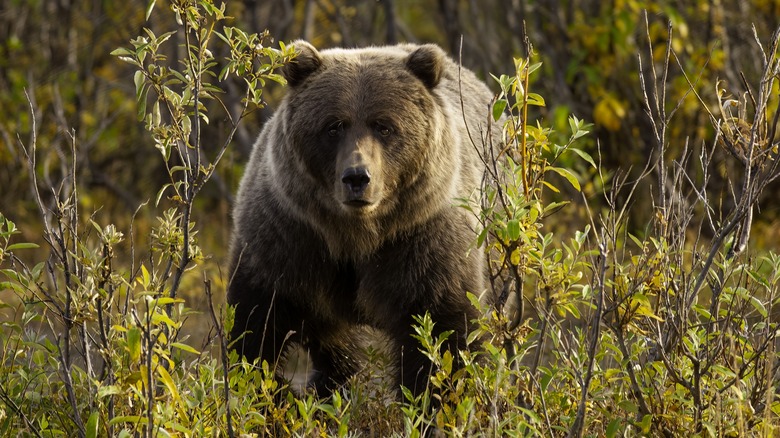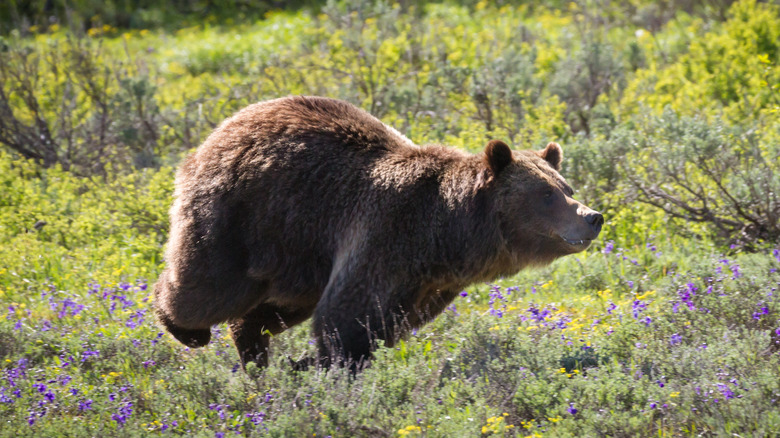What Is A Bear Bluff Charge, And What Should You Do?
North America is home to several dangerous types of bears. Most people who adventure into bear territory are well aware of the potential danger of bear encounters. They take care to avoid mistakes that attract bears to campsites and make sure they know what to do if attacked by a bear. Of course, not all bear encounters take place deep in the wilderness. As both suburbs and the distribution range of bears grow, backyard bear encounters are increasing as well. This has led suburbanites to employ various bear-proofing tricks to keep bears away from homes.
Whether in the backcountry or backyard, bear encounters are almost inevitable in areas where bears are known to live. Therefore, it is important for anyone who lives, plays, or otherwise spends time in bear country to know how to react if a bear charges during one of these encounters. That reaction will depend in part on whether the bear has a true intent to attack or is simply bluffing. So, what is a bear bluff charge, and what should you do?
What is a bear bluff charge?
According to the National Park Service, a bluff charge is a bear's attempt to scare off an unwelcome intruder or perceived threat. When a bear performs a bluff charge, there will be a few tell-tale signs. A bluffing bear will have its head up. Its ears will be up as well and pointed forward. Like any creature attempting to appear intimidating, the bear will try to make itself look bigger. The bear will be moving in a pouncing or bounding motion, but will either stop well short or move to one side or the other instead of pushing to attack. Oftentimes, a bluffing bear may leave the area after a false charge, seemingly satisfied that it has sufficiently intimidated its intended victim.
A bear intent on attacking will display physical signs of stress, such as pacing frenetically, forcibly pounding its paws on the ground, or loudly clacking its teeth. Additionally, unlike a bluffing bear, a bear intent on an aggressive attacking charge will have its head lowered and its ears pointing back towards its body.
What you should do if a bear bluff charges
Although bluff charges can be nerve-rattling, it is imperative that you remain calm — or at the very least outwardly appear so. In the case of a bear bluff charge, the absolute worst thing you can do is run. If you attempt to run, it is very possible it will trigger a predatory reaction in the bear that will result in a full-on attack. Given that grizzly bears can run as fast as 40 miles per hour and black bears have a top speed of 30 mph, it is unlikely you would get many steps in before the bear was on you anyhow. Instead, it is a much better idea to stand your ground and hope the bear veers off or retreats after its bluff charge.
However, even if you do not run, there is a chance a bluffing bear may turn aggressive. If this happens, your reaction should be much different depending on the type of bear that is attacking. When being attacked by a black bear, you should fight back, using anything you can get your hands on to defend yourself. On the other hand, if a grizzly attacks, your best chance at survival is to play dead and hope the bear decides the threat has been eliminated.


